Have you ever tiled something yourself? Here’s the ultimate Ikea hack for turning two Ikea kitchen islands into a tiled work table! Keep on reading!
If you’ve been following along on Instagram you will have, no doubt, seen the two Ikea kitchen islands that I have tiled and turned into my work table. Or maybe you spotted it in our recent studio tour? You could say that I’ve been oversharing the progress, but who’s keeping track?! Well, I thought it might be nice to see a little bit behind the scenes along with the tutorial in case you’ve been planning on doing something different to your kitchen or work space.
Ikea kitchen island hack
The longer story is that I originally bought these two singular kitchen island tables from Ikea, the Tornviken to be exact, when we first moved into our home four years ago. Our house had no kitchen in it when we bought it so the idea is that we would quickly put something in so that we could move in, and then take our time renovating it exactly how we wanted it. We put in basic Home Depot cabinets and the kitchen worked just fine. Nothing pretty, just functional. You can see the phase 1 renovation kitchen here.
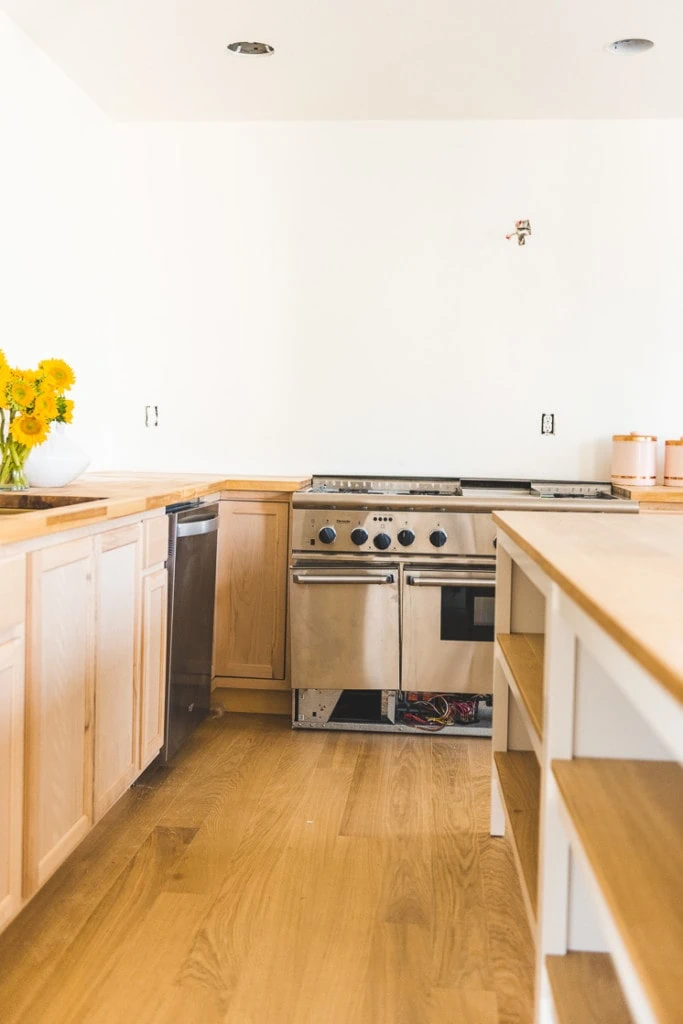
Counter height is a must for a work space
Soon enough we replaced the two Ikea tables with the custom wood Beck and Cap handmade beauty that you see today when we replaced our cabinets for the show. I thought I’d just sell the two kitchen islands, but I ended up bringing them downstairs into my studio. Because they are counter height, I found them to be so much more helpful for our work space than the desk height tables we had always used. All of a sudden we could use the counter height for laying out patterns and laying out materials for this and that. I felt somehow so much more motivated to get busy for some reason. Not quite sure about the science behind that, but I recommend counter height tables to everyone!
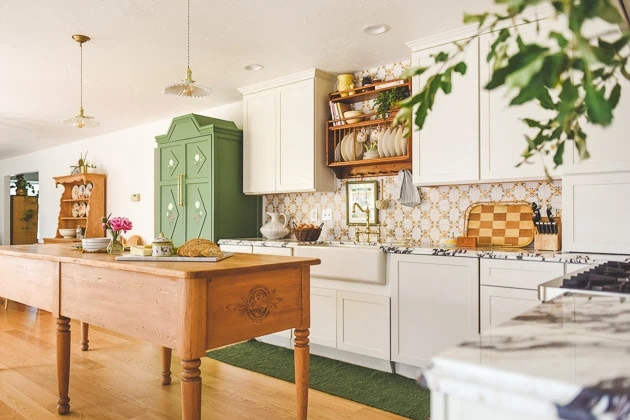
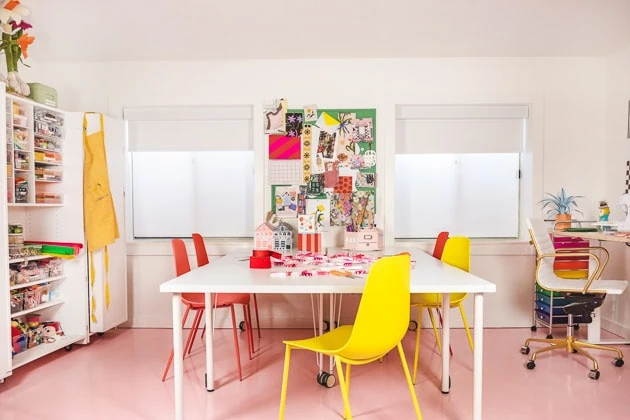
Planning the layout of my work space
One day I decided to switch things up and put the two islands back to back right here in the center and I LOVED it. It grounded the space, made it way more functional for us, and became a focal point. The problem was that they looked a bit too Farmhouse style than what I was going for especially with the new Kukka chandelier I had just put in from the Sarah Sherman Samuel collection at Lulu and Georgia.
What are the options of covering the kitchen island
I got to thinking about what I could do–paint it, stain it, cover it…and then I remembered all this extra tile I had from Fireclay Tile that I had used for our little kitchenette and thought I could do something with it. Mind you, I have no experience tiling or customizing furniture, but if there’s one thing I’ve learned from social media is that we are all professionals when it comes to home improvement. LOLZ.
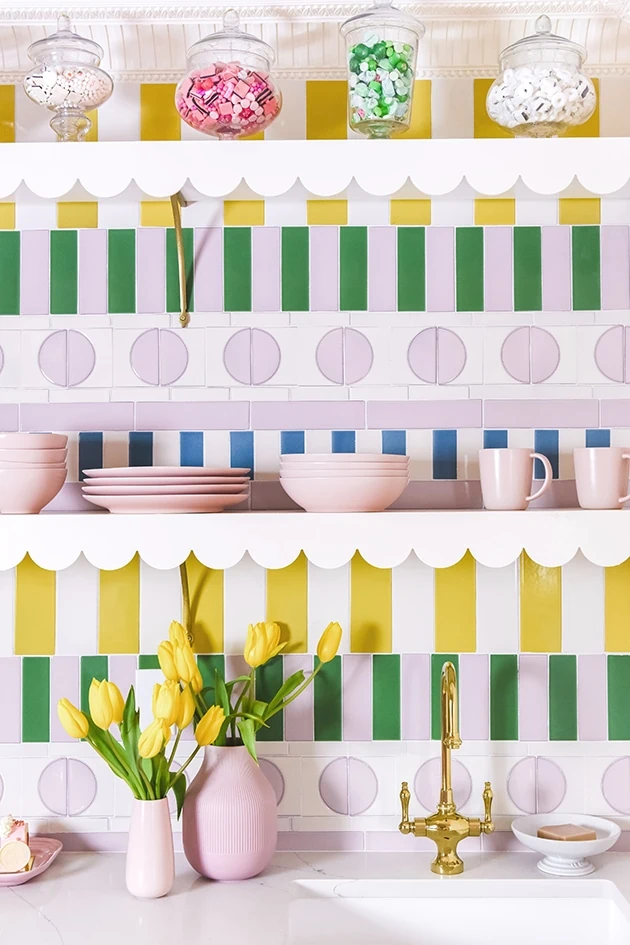
I decided to do a similar type mosaic for the fronts like I did for the kitchenette, which meant figuring out how to make it all happen. I’m sure people with more experience would have done it differently, but hey, it’s worked out so far! Here’s how it went!
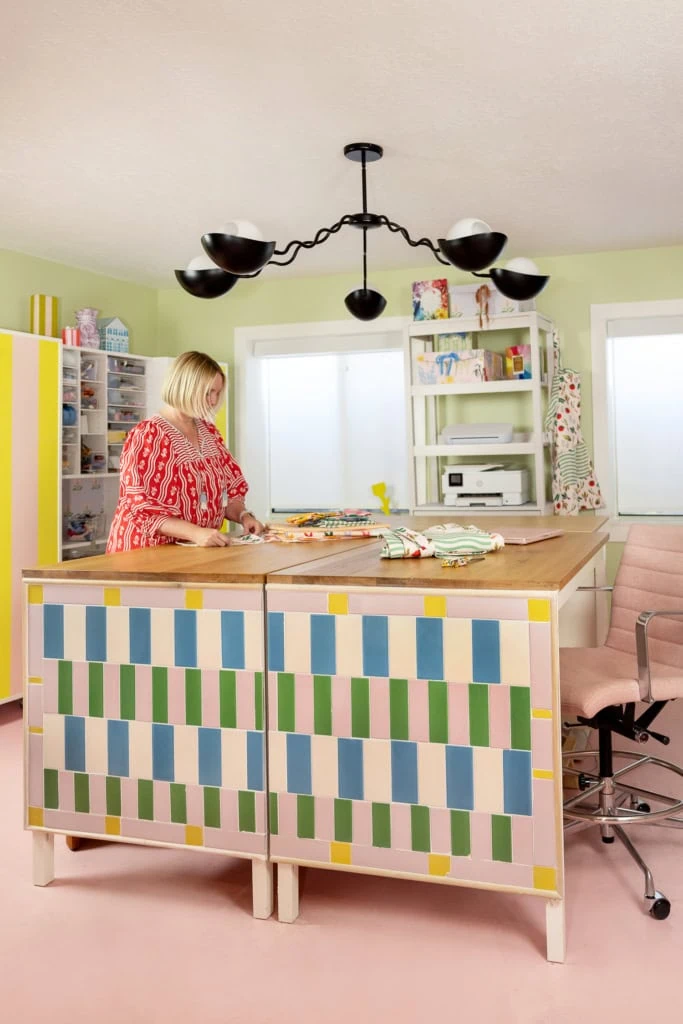
Kitchen Island turned tiled work table Ikea Hack
Difficulty:
IntermediateTime:
A lot-ha!Materials
- Tile
- Tornviken Ikea kitchen islands
- Tile cutter
- Thing piece of wood 30×28 for each side
- Wood dowels for trim 3/4″
- liquid nails
- trim cutter
- thinset
- notched trowel
- grout
- rubber grout floater
- wood filler
- caulk gun
- tiling sponge
- bucket for water
Instructions
Cover the ends of the islands
-
First, I covered the ends of the islands with a flat piece of wood from Home Depot so that there would be a flat surface to apply the tile to. I had them cut it for me, 30×28″.
-
I started to drill the wood pieces into the ends of the island but could not for the life of me get them to go in. I don’t know if it was hitting hardware or if the wood was just to dense so I used Liquid Nails and secured them together with clamps and had them dry over night.
- Next I added a trim to the edges so that the tile would have a nice place to rest inside. I wanted a smooth like so I opted for dowels, but in hindsight I would have gone with something simpler to cut and piece together as dowels, because they are round all the way around, they roll around and around and around. I used a trim cutter to cut them since I don’t have a saw and they were simple enough. I sanded them down so they weren’t raw edges.
Tiling
-
Time for tiling! I wasn’t concerned about being perfect about tiling, which is why I didn’t hire anyone for it. I’m sure it could have been exact! I already had a cheap $20 manual tile cutter from a previous project so I thought I was good to go. Turns out, it didn’t last long and I wish I would have rented a tile cutter from the get go. I started by laying out my pattern. I used tape on the ground to make the exact shape.
- I kept going with the thinset until it was all full. The manual cutter started to give me problems until I switched to the rented electrical one part way through and realized I had been missing out! I hadn’t used one before so it was a small learning curve, but worth it!
-
Once the thin set was dry (I left it over night), I applied the grout with the rubber grout float and got it into every nook and cranny. This was kind of fun! It makes the whole project look so much better. Use your sponge to clean as you go. There will be a lot of drippage so get a towel to put underneath.
- After the grout, I added in some wood filler to fill in the holes in the trim so that it would look better and complete.
- I’m still trying to decide if I want to paint the trim or stain it, but in the meantime, I really like it left unfinished.
Lessons learned from my Ikea hack tiled work table
This was my first time tiling, my first time really doing anything like this so there were a lot of lessons learned!
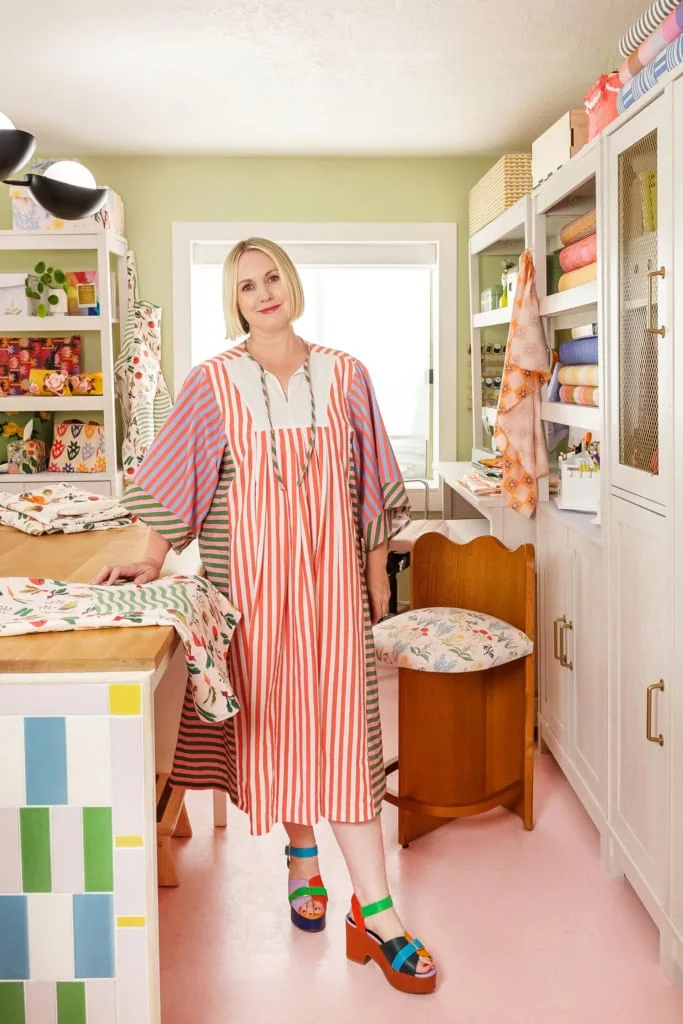
- Instead of using the cheap $20 manual tile cutter, don’t even bother and either go straight to renting a machine or purchasing one if you intend to do more tiling. It’s a big thing to have around the house for something that doesn’t work well.
- If I wanted the pattern of the tile to be perfect I would have spent more tile measuring for balance, but I didn’t really care.
- Don’t use dowels for trim! They are tricky little buggers!
Optical Illusion
Now, the big question is, does the tiling pattern trick your eyes? The wavy gets me every time! Someone recently mentioned in this Instagram reel that it probably wouldn’t have happened had I used tile spacers to make all the in between lines even, and that makes sense to me.
But honestly, I love how it turned out–it brings me so much joy! I love a good Ikea hack and this one has fit my needs so well as my tiled work table. I plan on doing more tile projects because I have lots of tile still!



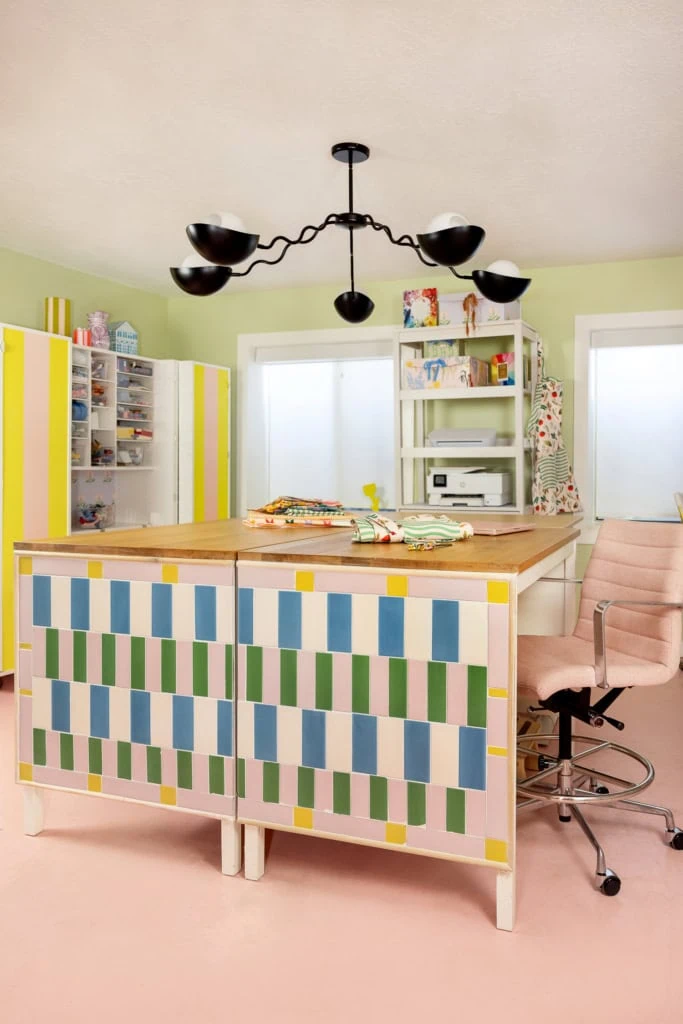
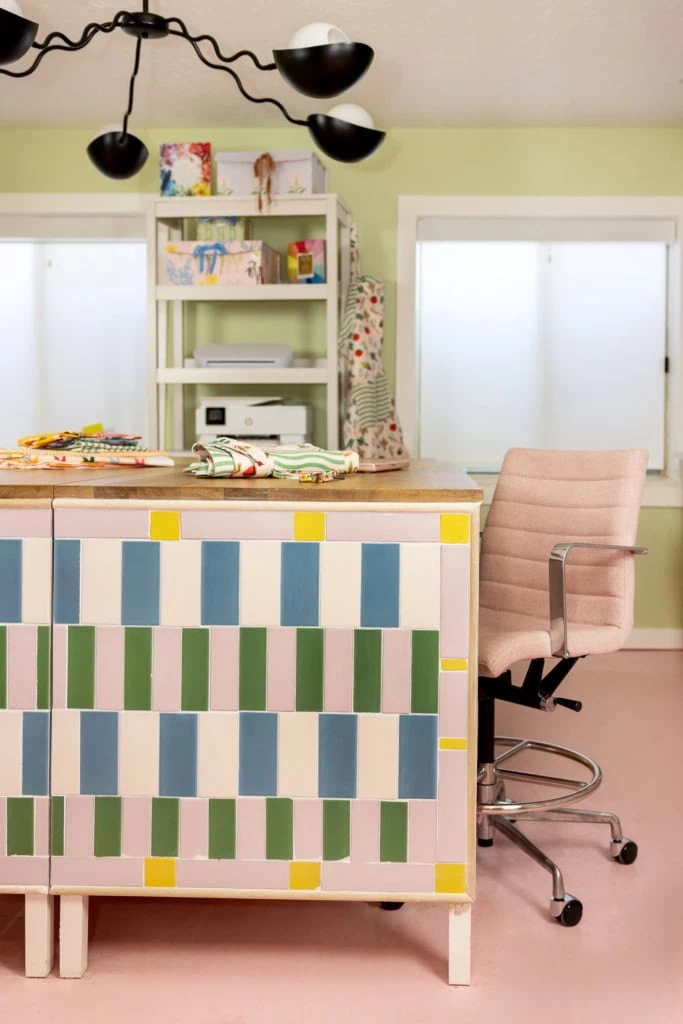
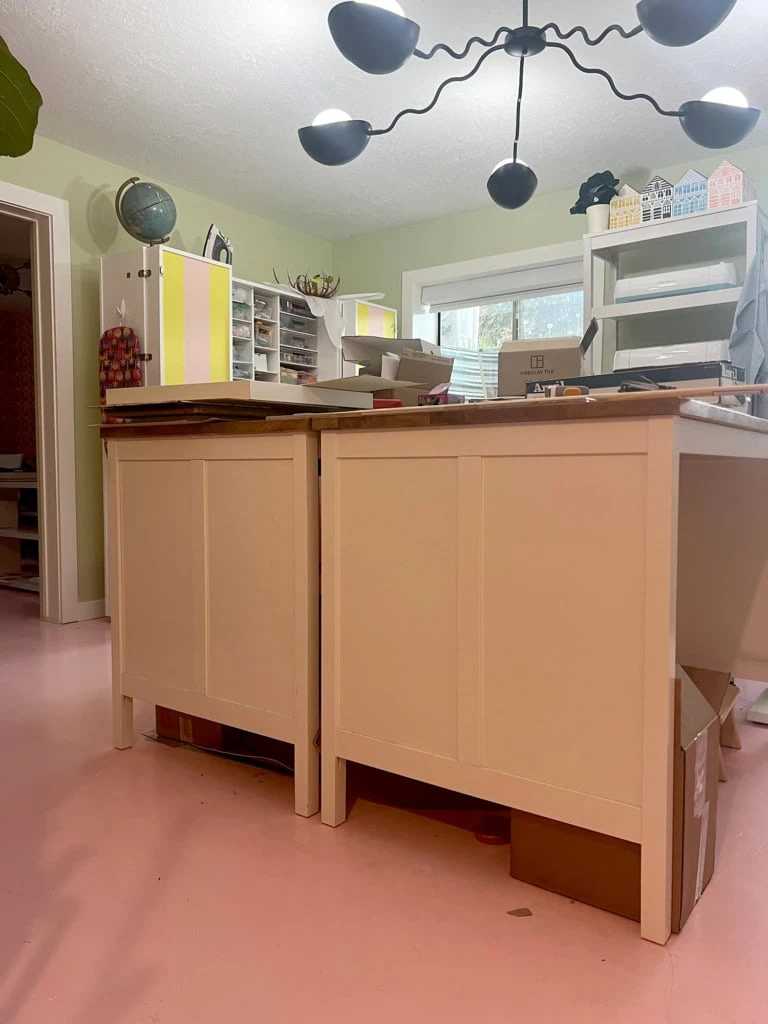
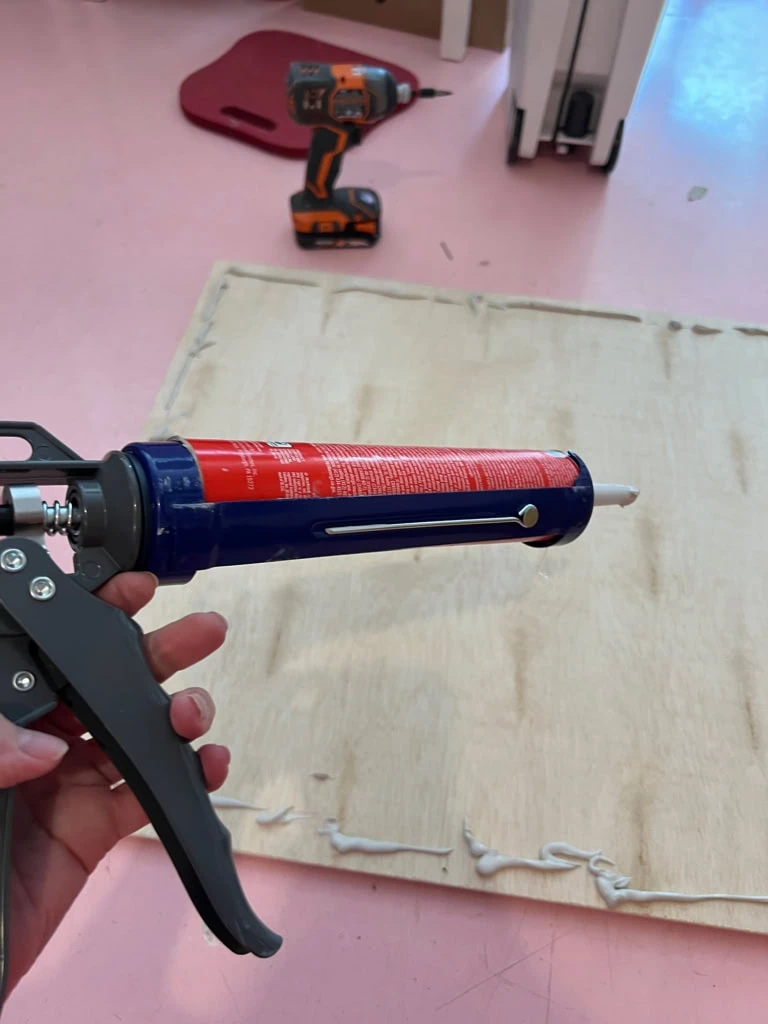
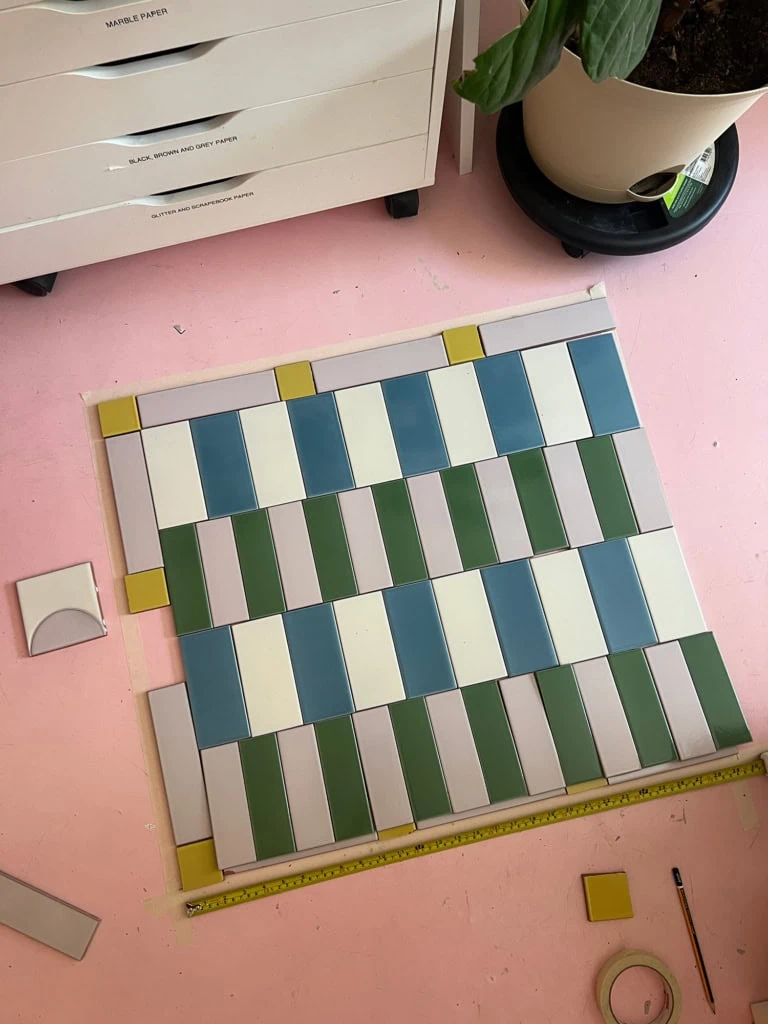
Comments